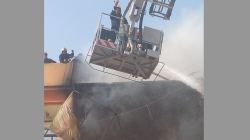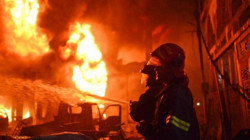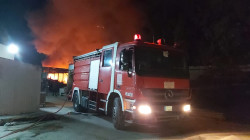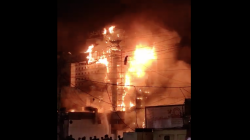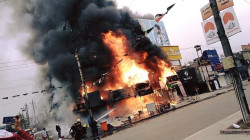Gas clouds are coming, Iraq to suffer from emissions of Los Angeles wildfires
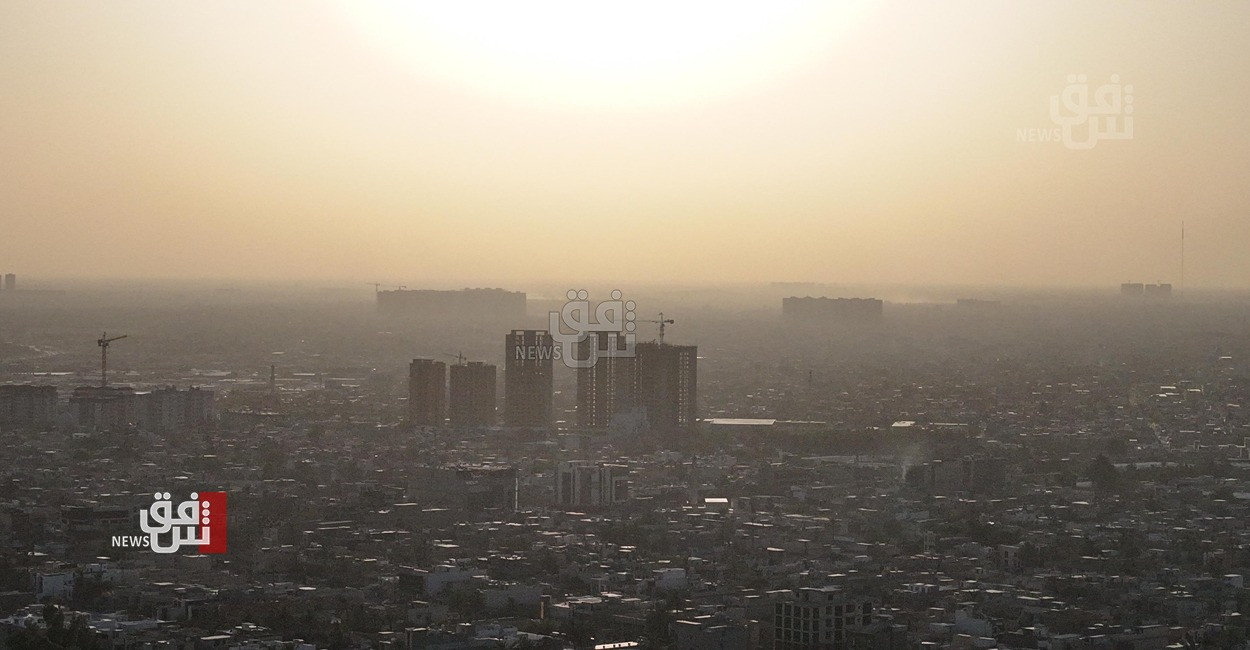
Shafaq News/ Iraq seems to be facing its share of crises from afar. The latest issue on the horizon stems from the wildfires in Los Angeles, California. Experts have raised alarms about the emissions from these fires being carried by winds toward Iraq, causing a rise in air temperature and respiratory distress.
Since Tuesday, January 7, six simultaneous wildfires have ravaged neighborhoods in Los Angeles, resulting in at least 25 fatalities and destruction, including the loss of 10,000 buildings. The toll is expected to rise.
US President Joe Biden has labeled these fires as the worst in the city's history, describing the situation as "the largest and most destructive wildfires in California's history," and emphasizing that "climate change is a reality."
Gas Clouds
The winds aiding the spread of the Los Angeles fires have reached speeds of up to 120 kilometers per hour, and experts agree that these winds can carry both the fires and their emissions, including sulfur dioxide, which forms smoke columns that reach the atmosphere.
Environmental pollution expert Iqbal Latif Jaber predicts that clouds carrying the gases from the Los Angeles wildfires will reach Iraq's skies.
In an interview with Shafaq News, Jaber stated, "The danger to Iraq lies in the fact that the northwestern winds will carry sulfur dioxide and carbon dioxide from the fires in the US to Iraq."
She added that, on Friday, January 10, residents of Baghdad experienced a noticeable increase in air temperature and chest tightness, which she attributes to sulfur dioxide produced by emissions from the Los Angeles fires.
Jaber concluded that "climate change is the biggest threat to human health and biodiversity," compounded by Iraq's ongoing struggle with air pollution from factories, public transportation, and other sources.
Baghdad's Pollution
The capital, Baghdad, is facing a significant rise in pollution levels, often leading to suffocation cases, especially due to the sulfur smell that intermittently fills the air with no clear source.
On January 5, Baghdad's pollution index peaked as winds subsided and no substantial solutions were found to address its sources.
The Iraqi Telescope website attributed the rise in pollution to the presence of particulate matter, particularly those measuring 2.5 microns, in the air. These fine particles, which may be made of Carbon, Lead, Ammonia, or Nitrates, pose a serious health risk as they enter the respiratory system.
No Forests, No Wildfires
As for whether Iraq could experience fires similar to those in Los Angeles, meteorologist Sadeq Atiyah asserts that the cause of the Los Angeles wildfires was forest drought, a phenomenon also seen in some parts of Australia.
However, Iraq is distant from such occurrences. "There are no forests here to catch fire," he explained.
Atiyah further noted that, occasionally, in the post-harvest season during April and May, fires may occur in the forests of Mosul or the farmlands of Salah al-Din due to various causes, such as lightning or human-induced accidental fires.
However, these fires are not as intense as the ones currently engulfing Los Angeles.
Dr. Kazem Abdul Wahab Al-Asadi, a climate change professor at the University of Basra, added that the climatic similarity between Iraq and Los Angeles is not enough to trigger large wildfires. The lack of vast forests, extensive tall grasses, and fast winds that could fuel such fires means that they are only likely to occur in limited areas far from urban centers.
He explained that "fires could start during grain crop planting in the summer, but these are local fires that are easy to control for several reasons," including lower elevation, slower winds, and the availability of means to contain and extinguish them.
In turn, Amer Al-Jabri, the media director of the Iraqi Meteorological Organization, reassured that Iraq's geography and terrain differ from other parts of the world, so it is unlikely to be impacted by events like those in Los Angeles.
He emphasized that Iraq does not feel the effects of climate changes in neighboring countries, let alone distant ones, though it can be affected by seismic activity, such as that occurring in Iran.
Drought Crisis
The SPI (Soil Moisture Index) for the Middle East in December 2024 revealed severe and extreme drought conditions across most of Iraq (ranging from 1.6 to 1.8 below the natural threshold), as reported by the Iraqi Meteorological Organization.
The organization attributed the widespread drought in Iraq to the low rainfall levels in December, which affected large parts of the Arabian Peninsula, Iran, and Turkiye.
Iraq has been facing a prolonged drought crisis for several years, but it has worsened over the past four years, with water levels dropping to unprecedented lows due to regional drought.
The situation is further exacerbated by the country being among the five most affected by climate change, according to reports from the United Nations and other relevant international organizations.
The second key reason for the drought is the reduced water flow from the Tigris and Euphrates Rivers, caused by the water policies of Iran and Turkiye.
Prime Minister Mohammad Shia al-Sudani confirmed in March 2023 that seven million Iraqis have been affected by climate change.
The United Nations Development Programme (UNDP) in Iraq has previously highlighted that the marshes are the most vulnerable areas to climate change, noting that Iraq loses around 400,000 acres of agricultural land annually due to these shifts.
According to the 2019 Water Stress Index forecast, Iraq may become landlocked with no rivers by 2040, with the Tigris and Euphrates no longer reaching their final destination in the Arabian Gulf.
